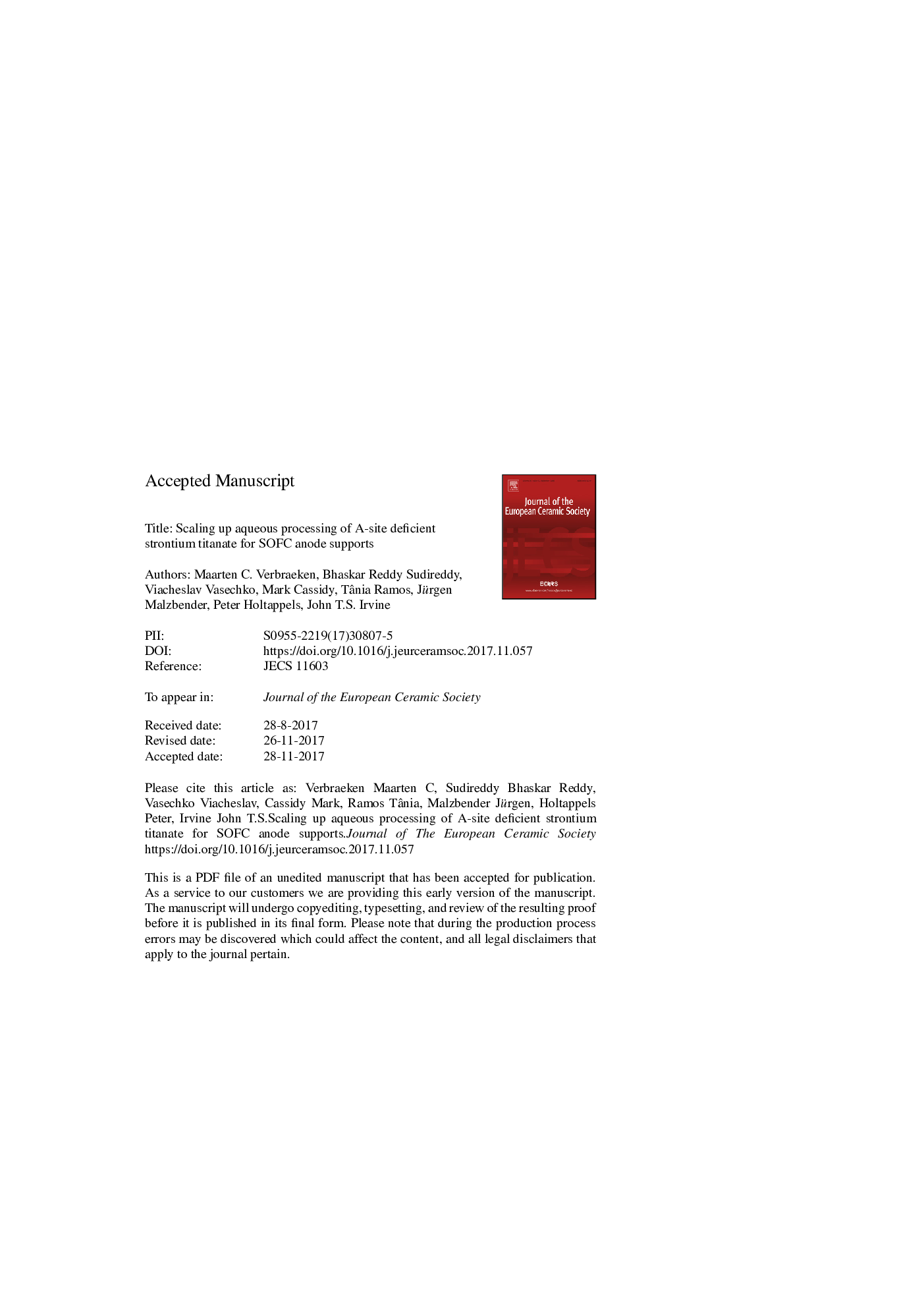| Article ID | Journal | Published Year | Pages | File Type |
|---|---|---|---|---|
| 7898806 | Journal of the European Ceramic Society | 2018 | 20 Pages |
Abstract
All ceramic anode supported half cells of technically relevant scale were fabricated in this study, using a novel strontium titanate anode material. The use of this material would be highly advantageous in solid oxide fuel cells due to its redox tolerance and resistance to coking and sulphur poisoning. Successful fabrication was possible through aqueous tape casting of both anode support and electrolyte layers and subsequent lamination. Screen printing of electrolyte layers onto green anode tapes was also attempted but resulted in cracked electrolyte layers upon firing. Microstructural, electrical and mechanical properties of anode supports and half cells will be discussed. The use of two different commercial titanate powders with nominal identical, but in reality different stoichiometries, strongly affect electrical and mechanical properties. Careful consideration of such variations between powder suppliers, and batches of the same supplier, is critical for the successful implementation of ceramic anode supported solid oxide fuel cells.
Related Topics
Physical Sciences and Engineering
Materials Science
Ceramics and Composites
Authors
Maarten C. Verbraeken, Bhaskar Reddy Sudireddy, Viacheslav Vasechko, Mark Cassidy, Tânia Ramos, Jürgen Malzbender, Peter Holtappels, John T.S. Irvine,
